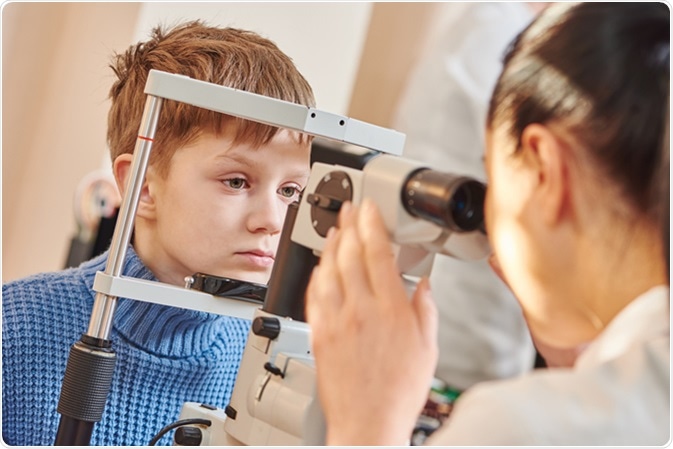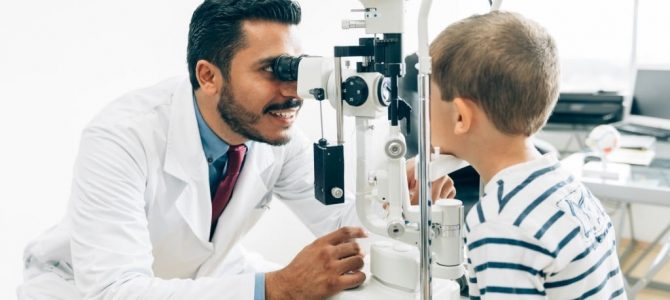Professional Glaucoma Service Near Me: Specialized Care at Our Clinic
Professional Glaucoma Service Near Me: Specialized Care at Our Clinic
Blog Article
Checking Out the State-of-the-Art Technologies Utilized for Treating and identifying Eye Problems
In the realm of ophthalmology, the advancement of modern technology has substantially boosted the devices readily available for detecting and dealing with various eye conditions. From sophisticated imaging technologies that supply comprehensive understandings into eye frameworks to robotic-assisted operations that supply unrivaled precision, the landscape of eye care is regularly developing. With the combination of artificial intelligence in diagnostics, genetics therapy developments, and virtual fact recovery, the opportunities for enhancing patient results are expanding at a rapid speed. The merging of these innovative technologies holds the promise of transforming the area of ophthalmology, providing new methods for customized and efficient therapies.

Advanced Imaging Technologies
Advanced Imaging Technologies have actually reinvented the area of ophthalmology by giving exact and in-depth visualization of the eye structures. Optical Comprehensibility Tomography (OCT) stands apart as a vital innovation in this world. OCT uses light waves to record high-resolution cross-sectional pictures of the retina, enabling the recognition of minute architectural adjustments. This non-invasive technique help in the early detection and monitoring of various eye problems such as macular degeneration, diabetic retinopathy, and glaucoma.
Additionally, Fundus Photography is one more essential device in ocular imaging. This strategy entails capturing thorough photos of the rear of the eye, consisting of the retina and optic disc. Fundus Photography assists in documenting the development of eye diseases, reviewing therapy effectiveness, and informing patients about their eye health.

Robotic-Assisted Procedure
Robotic-assisted surgical treatments have actually substantially progressed the capacities of ocular surgical treatment, introducing a new era of accuracy and efficiency in treating different eye problems. By incorporating robot modern technology right into surgeries, ophthalmologists can achieve unequaled accuracy and control, resulting in improved individual outcomes.
Among the main advantages of robotic-assisted surgical treatment in ophthalmology is the improved mastery and stability it supplies to specialists. The robotic arms can carry out specific movements with a high degree of precision, permitting delicate treatments with minimal invasiveness. This level of precision is specifically useful in surgical treatments entailing the retina, where also small mistakes can have significant effects for a client's vision.
Additionally, robotic-assisted surgical systems give real-time imaging and comments to the surgeon, enabling them to make educated choices throughout the treatment. This modern technology boosts the cosmetic surgeon's situational recognition and permits adjustments to be made promptly, guaranteeing optimal results for the individual.
Expert System in Diagnostics
With the advancement of sophisticated modern technologies boosting medical precision in ocular procedures, the integration of Artificial Intelligence in diagnostics has arised as an essential advancement changing the area of eye treatment. Expert System (AI) algorithms are being progressively made use of to analyze intricate information from imaging innovations like optical comprehensibility tomography (OCT) and fundus photography to help in the early detection and exact diagnosis of different eye conditions. These AI systems can successfully recognize patterns and anomalies in images that might not be discernible to the human eye, allowing quicker diagnosis and treatment preparation.
AI formulas can likewise predict illness development, advise customized therapy strategies, and examine the effectiveness of treatments. By enhancing the analysis procedure, AI not only enhances the performance of eye treatment professionals but likewise boosts client outcomes by allowing prompt interventions. As AI proceeds to advance, its duty in diagnostics is expected to increase, using brand-new possibilities for very early intervention and individualized treatment in the field of ophthalmology.
Gene Therapy Technologies
In the realm of sensory innovations, current strides in gene therapy innovations have actually stimulated significant interest amongst scientists and healthcare specialists alike. Genetics therapy holds enormous guarantee in changing the treatment of different eye problems by targeting the hidden hereditary causes. By presenting genetic product right into cells to compensate for irregular genes or to give an absent gene, genetics treatment uses an individualized technique to dealing with inherited eye conditions such as retinitis pigmentosa, Leber congenital amaurosis, and others that were formerly considered untreatable.

As research in genetics treatment remains to development, the possibility for tailored therapies for a bigger variety of eye conditions grows, supplying refractive surgeries in al new wish for individuals with hereditary eye diseases.
Digital Truth Rehab
Virtual fact recovery has become a sophisticated method in boosting the recovery and rehab processes for individuals with various visual disabilities. glaucoma service near me. By replicating real-world atmospheres with immersive technology, virtual truth uses a distinct system for vision treatment and rehabilitation. This ingenious technique allows people to participate in interactive exercises and tasks created to boost aesthetic acuity, deepness understanding, eye coordination, and general aesthetic functioning
One secret advantage of online fact rehab is its ability to tailor therapy programs based upon the details demands and capabilities of each individual. Via real-time comments and surveillance, medical care specialists can track progress, change treatments, and supply personalized like optimize end results. Furthermore, virtual truth modern technology can create a secure and controlled space for individuals to practice visual tasks, get rid of obstacles, and construct self-confidence in a digital setup prior to transitioning to real-world scenarios.
Conclusion
Finally, the advancements in imaging innovations, robotic-assisted surgical procedures, synthetic intelligence diagnostics, gene treatment developments, and digital truth recovery have substantially boosted the medical diagnosis and therapy of eye problems. cataract care service. These state-of-the-art technologies have actually changed the field of ophthalmology, allowing for even more effective and exact treatments. As technology proceeds to progress, the future of eye treatment looks appealing with the possibility for even more innovative remedies to enhance person end results
In the world of ophthalmology, the evolution of innovation has actually significantly boosted the devices readily available for identifying and dealing with numerous eye conditions. Fundus Photography aids in recording the development of eye conditions, reviewing therapy efficacy, and informing individuals concerning their eye health and wellness.
Artificial Intelligence (AI) algorithms are being significantly used to analyze complex data from imaging modern technologies like optical coherence tomography (OCT) and fundus photography to aid in the early discovery and exact medical diagnosis of various eye conditions.In verdict, the advancements in imaging technologies, robotic-assisted surgeries, fabricated knowledge diagnostics, genetics therapy advancements, and virtual fact recovery have actually significantly enhanced the medical diagnosis and therapy of eye problems. As modern technology proceeds to evolve, the future of eye care looks encouraging with the capacity for even more innovative remedies to improve patient results.
Report this page